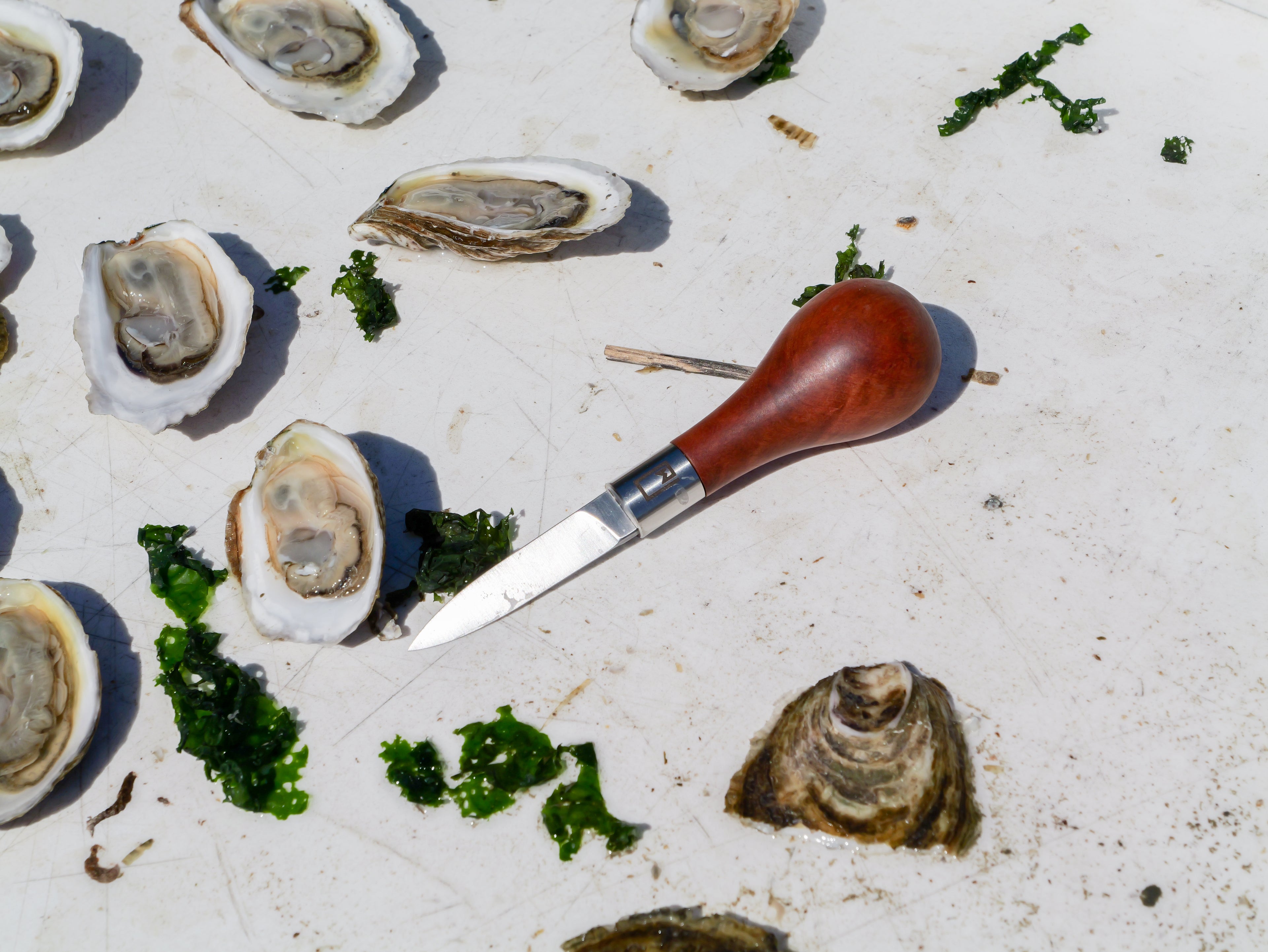
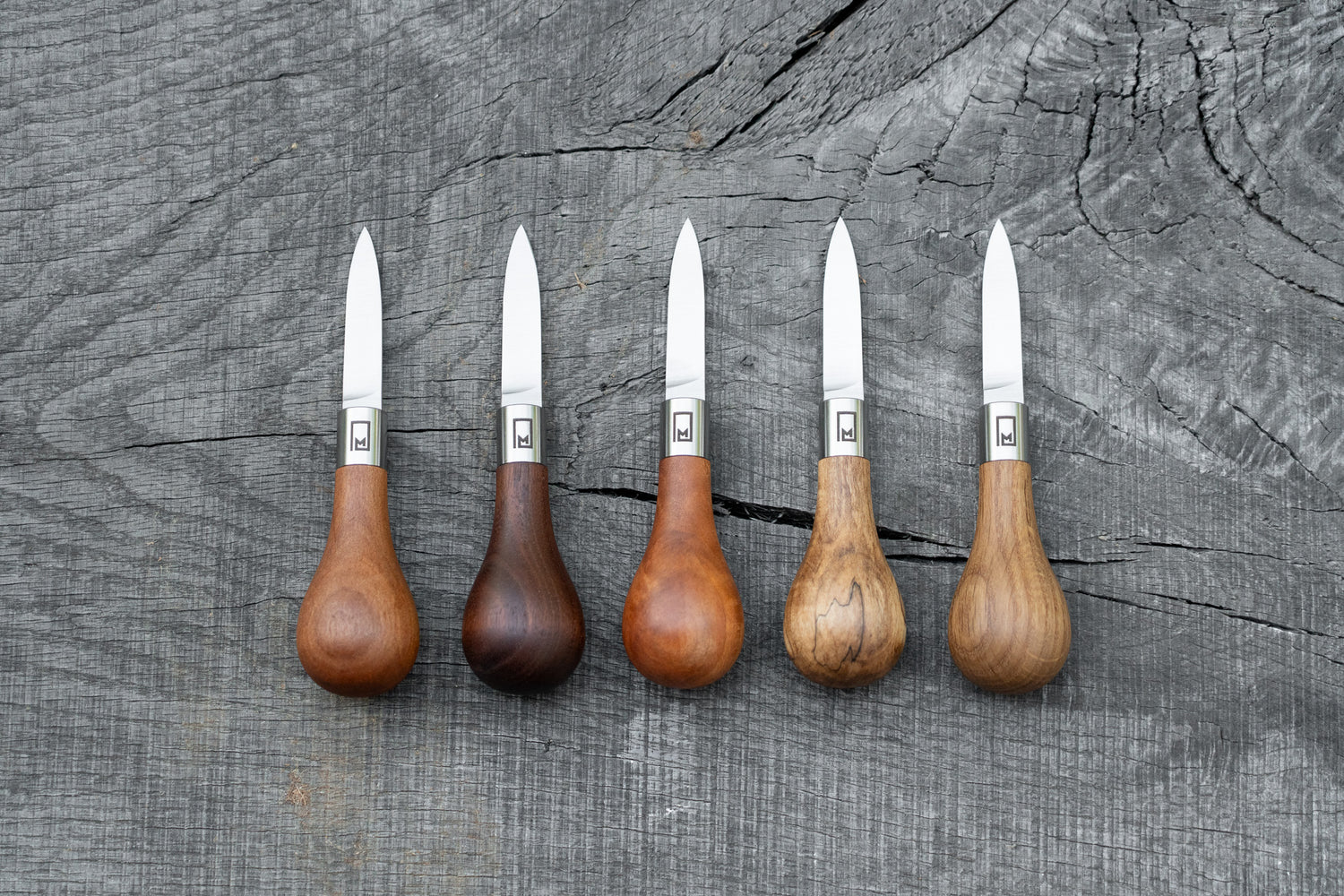
Chesapeake Shucker
On the Chesapeake Bay, watermen rely on a shucker called the stabber—its stout blade and rounded handle make quick work of oysters. Our take on this trusted design is simple, strong, and built to last.
Stainless damascus steel variants available at District cutlery, in-store and online.
Made in the USA
The Chesapeake Shucker was designed to be simple, strong, and effective. We harvested the wood locally, cut it into blanks, and sent it to K&G in Arizona—the industry leader—for stabilization. The stainless steel ferrules are precision‑machined by Tektonics in Richmond, VA, and the wood handles are turned by Keystone Wood Turning in Pennsylvania to our exact specifications.
This process allows us to use a tenon‑style construction, where the ferrule fits over the first part of the handle, creating an exceptionally strong connection between blade, ferrule, and wood. Each partner represents the best of American manufacturing. Back in our Charlottesville shop, we hand‑grind the blades and assemble every knife ourselves.
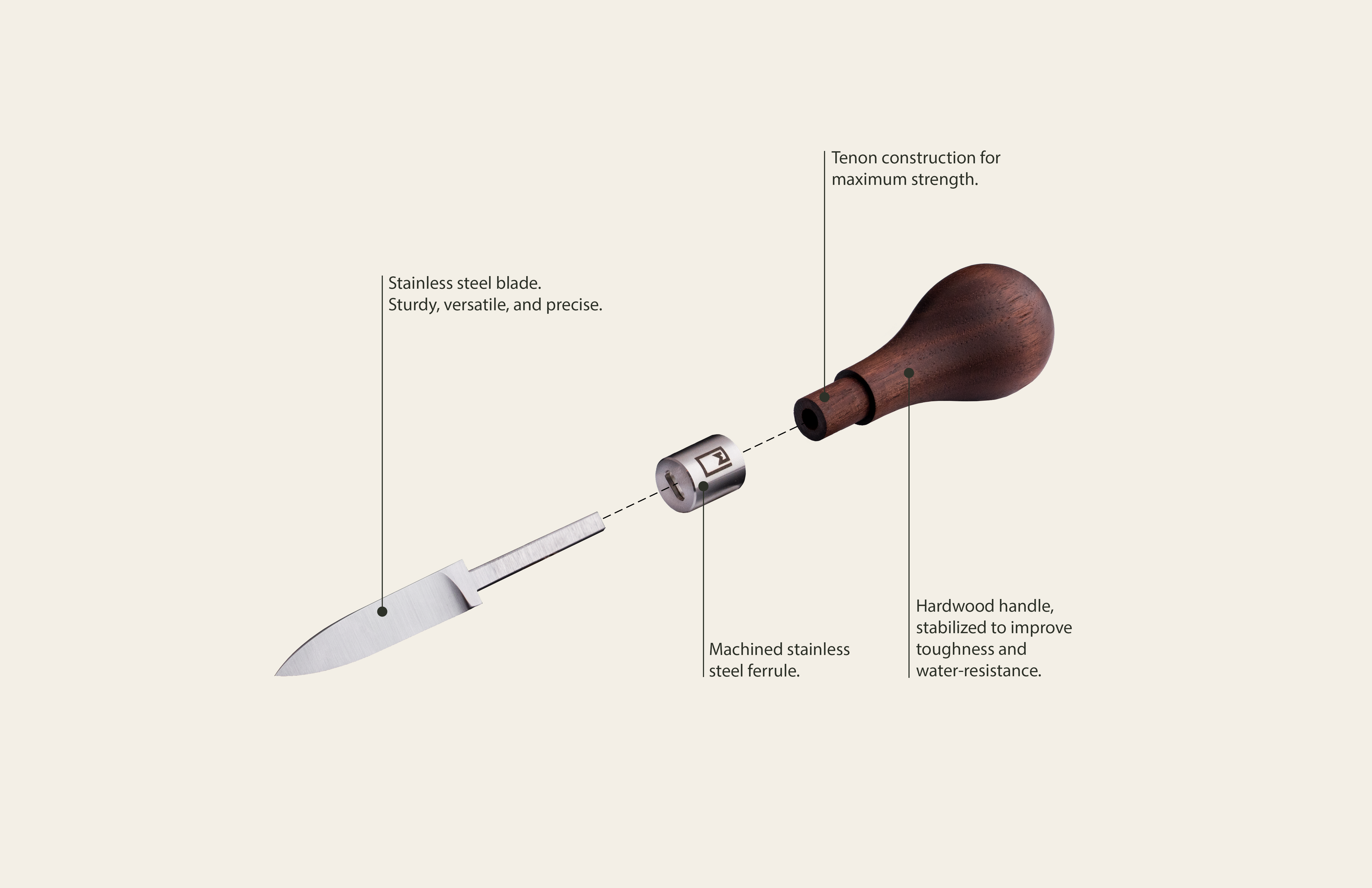
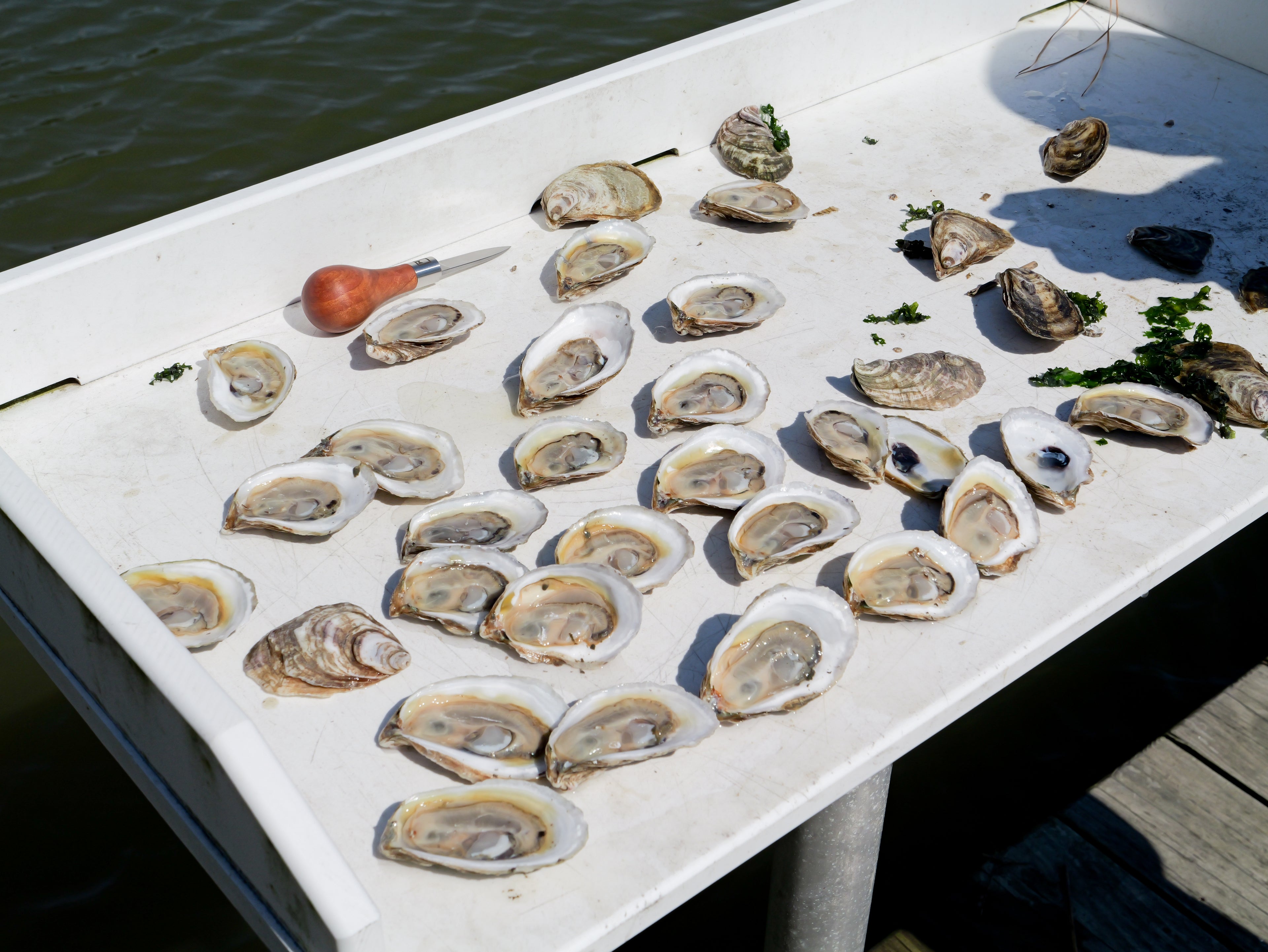
Oysters at the Heart of the Chesapeake
For generations, Native people relied on oysters as an abundant and reliable food source. Shell middens still line the Chesapeake’s shores, evidence of harvesting practices that sustained both oyster populations and communities.¹ When European settlers arrived, oysters quickly became central to coastal life—fueling skipjack fleets and feeding cities across the country.²
But abundance was pushed too far: over‑harvesting, disease, pollution, and reef destruction drove oyster populations to less than 1% of historic levels, leaving the Bay’s waters and ecosystems diminished.³ Today, restoration efforts are rebuilding reefs and reminding us that oysters are more than food—they’re a keystone of the Bay’s health, filtering water and creating habitat that sustains life.⁴
-

An oyster midden is a pile of discarded oyster shells left behind by people after harvesting and eating them, often accumulating over centuries. These shell heaps mark historic gathering sites and provide evidence of past diets, cultures, and ecosystems.⁵
-

Waterman Neil Lindsay tonging for oysters on a tributary of the Chester River.⁶
-

Staff from Smithsonian Environmental Research Center (SERC) and the Chesapeake Bay Foundation dump oysters off the SERC docks, to add to SERC’s restoration reef in the Rhode River.⁷
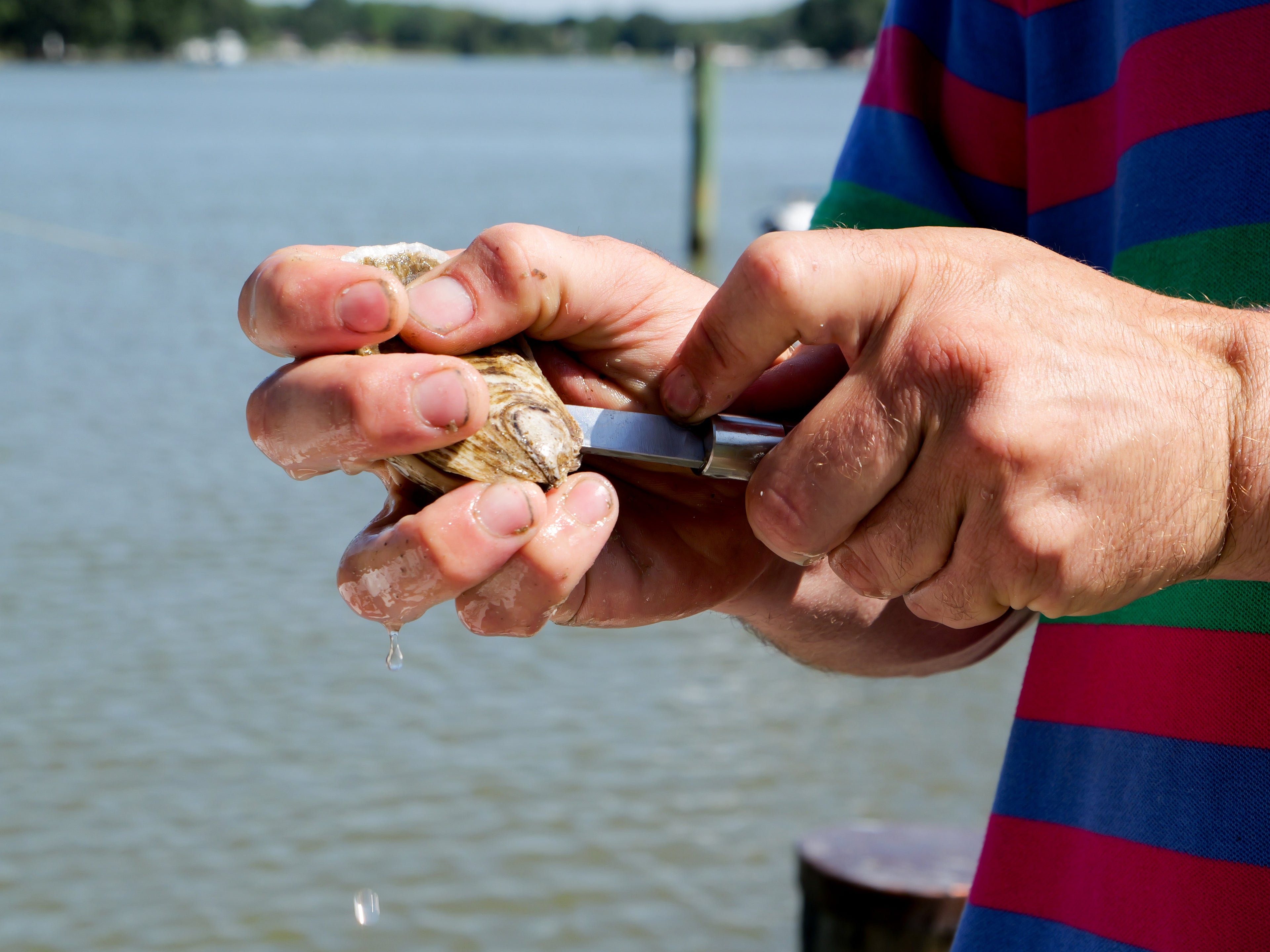
References
- Smithsonian Institution. Written in Bone: Shell Middens. National Museum of Natural History, 2016. https://naturalhistory.si.edu/education/teaching-resources/written-bone/shell-middens; Dennis B. Blanton, and Martin D. Gallivan. The Powhatan Landscape: An Archaeological History of the Algonquian Chesapeake.Charlottesville: University of Virginia Press, 2019.
- Chesapeake Bay Program. Oysters. Last modified August 23, 2023. https://www.chesapeakebay.net/discover/field-guide/entry/oysters.
- NOAA Fisheries. Eastern Oyster (Crassostrea virginica). Last modified December 2022. https://www.fisheries.noaa.gov/species/eastern-oyster; Chesapeake Bay Program. Oysters.
- NOAA Fisheries, Eastern Oyster (Crassostrea virginica); Chesapeake Bay Foundation. Oyster Restoration. 2024. https://www.cbf.org/issues/oysters/.
- Smithsonian Institution. “Indigenous Peoples Have Shucked Billions of Oysters Around the World Sustainably.” Smithsonian Newsdesk, May 3, 2022. Accessed August 4, 2025. https://www.si.edu/newsdesk/releases/indigenous-peoples-have-shucked-billions-oysters-around-world-sustainably.
- Chesapeake Bay Maritime Museum. Oystering on the Chesapeake. Exhibit description. Accessed August 4, 2025. https://cbmm.org/oystering-on-the-chesapeake/.
- Smithsonian Environmental Research Center and Chesapeake Bay Foundation. “Smithsonian and Chesapeake Bay Foundation Announce New Oyster Restoration Partnership.” Smithsonian Newsdesk, November 15, 2022. Accessed August 4, 2025. https://serc.si.edu/media/press-release/smithsonian-and-chesapeake-bay-foundation-announce-new-oyster-restoration-partnership.



